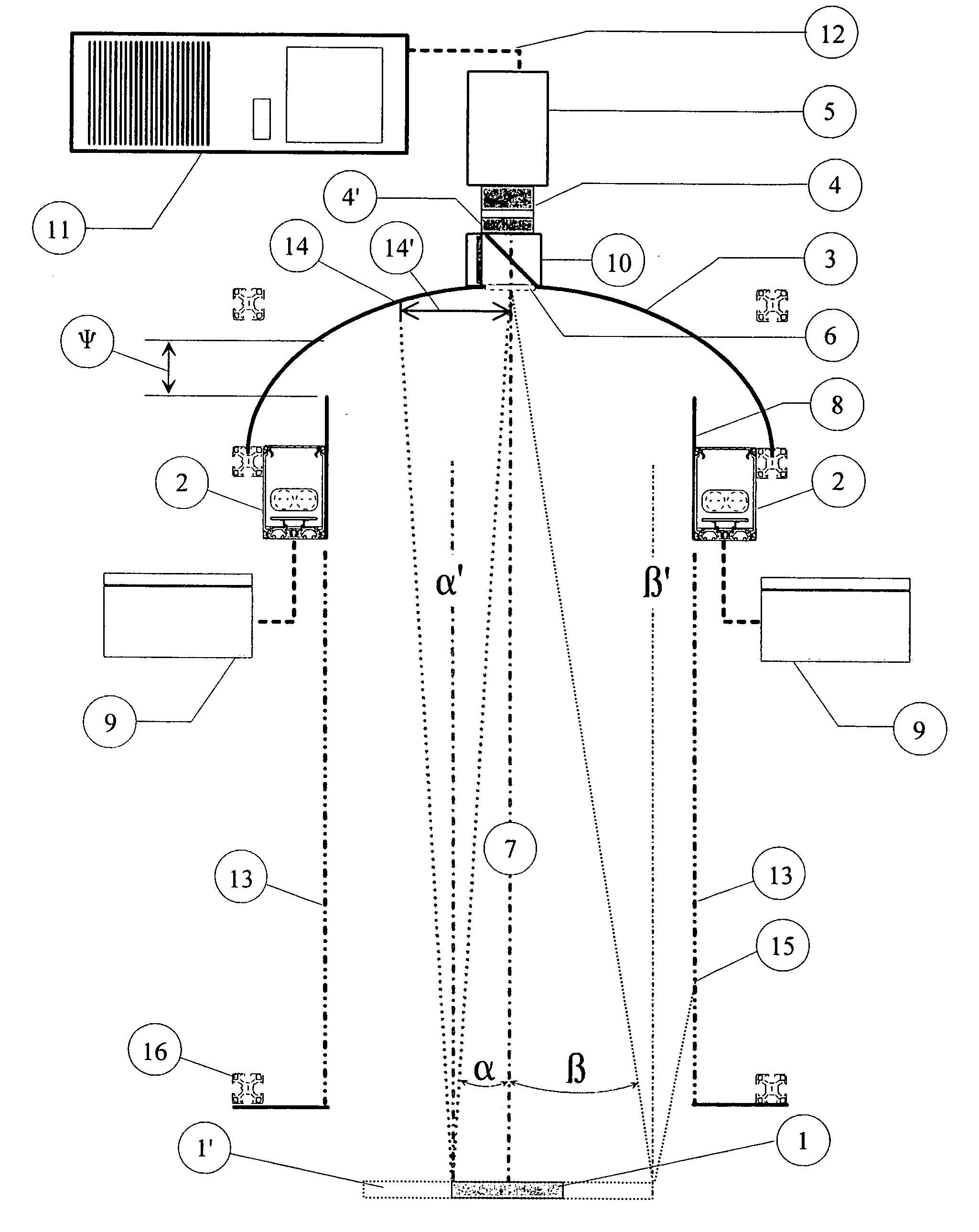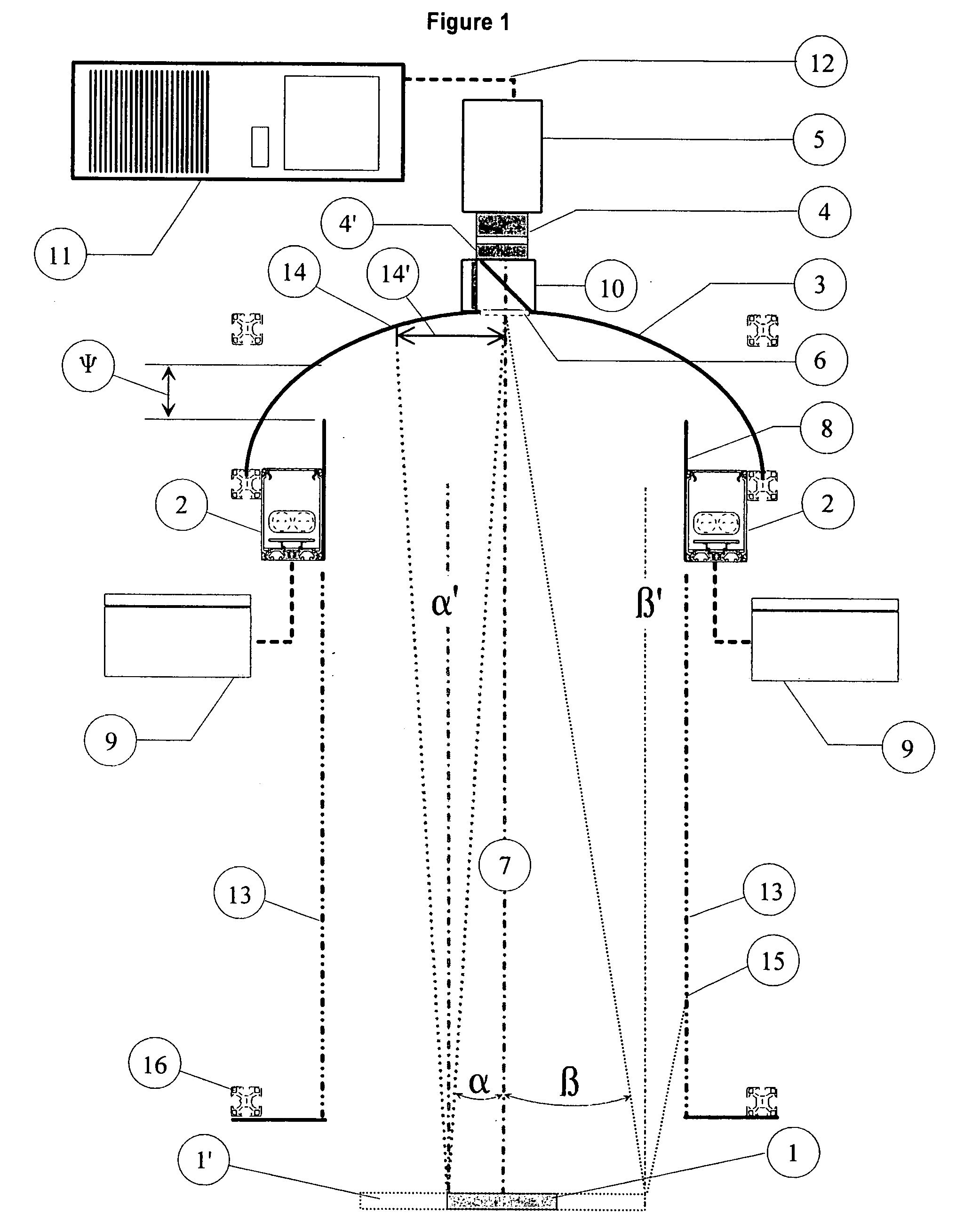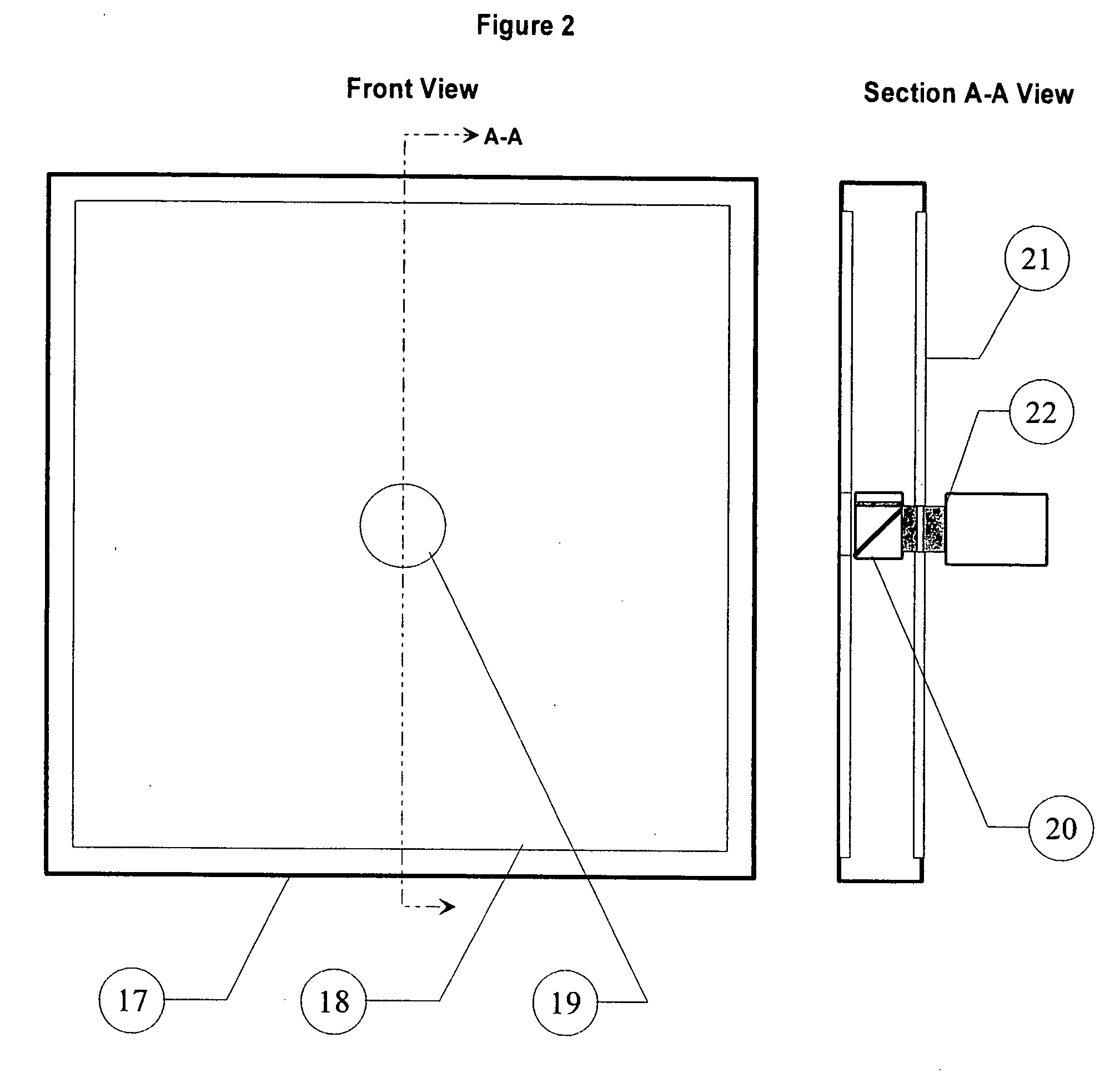Surface inspection technology for the detection of porosity and surface imperfections on machined metal surfaces
- Summary
- Abstract
- Description
- Claims
- Application Information
AI Technical Summary
Benefits of technology
Problems solved by technology
Method used
Image
Examples
Embodiment Construction
[0051] The present invention consists of several major components arranged in the proper configuration to produce image data that will yield repeatable measurements. The present invention, hereafter referred to as the “System” is comprised of several major components. The major components include 1) a mechanical device to aid in the location of the test components; 2) a high resolution image sensor (>3.2 mega-pixel); 3) a diffuse flat field illumination system with active-loop feedback control; 4) an image processor capable of supporting a minimum 65 MB of image memory; 5) specialized image processing software to extract surface imperfections; 6) special software to allow the communication of inspection parameters, data and results between devices; and 7) the necessary interface connections for the devices to exchange the data. The major components and their relationship to each other in the system are illustrated in FIG. 1. The system design allows it to inspect large surfaces usin...
PUM
 Login to View More
Login to View More Abstract
Description
Claims
Application Information
 Login to View More
Login to View More - R&D
- Intellectual Property
- Life Sciences
- Materials
- Tech Scout
- Unparalleled Data Quality
- Higher Quality Content
- 60% Fewer Hallucinations
Browse by: Latest US Patents, China's latest patents, Technical Efficacy Thesaurus, Application Domain, Technology Topic, Popular Technical Reports.
© 2025 PatSnap. All rights reserved.Legal|Privacy policy|Modern Slavery Act Transparency Statement|Sitemap|About US| Contact US: help@patsnap.com



